Australia So Much to See
Brachina Gorge Geological Trail - Flinders Ranges
This drive has a fascinating Geological Trail. The Brachina Gorge Geological Trail consists of a twenty kilometre drive that
passes through 130 million years of earth history. Trail signage provides an insight into past climates, the formation of the ranges
and the evolution of early forms of life. We were caught out by rain in 2006 so did not see all the different formations that
have been featured. A return trip in fine weather enabled us to see more.
Ten kilometres along the road, there is
a lookout point with large display boards outlining the geology of the gorge. Banner photo above taken from the lookout to the
range on the north side. We found the road rougher and busier on this return visit. Creek crossings were now dry.
Brachina Gorge provides a pathway through a rock sequence, which reveals its geological history. A corridor through time. Rocks
exposed along the gorge are between 500 and 650 million years old, and were deposited as sediments in an elongate depression known
as the Adelaide Geosyncline.
The area was flooded by the sea for much of a 150 million period, during which the sea level
rose and fell many times. Sediments were transported by rivers, and at time glaciers, and deposited on the sea floor.
Features of particular interest along the trail include:
Stromatolites, which represent some of the earliest evidence of life on earth.
Products of an ancient ice age
Debris from a large meteorite impact about 580 million years ago
Ediacara Fauna, some of the oldest known animals on Earth
The Cambrian-Precambrian boundary, which marks the beginning of an expansion
of life about 540 million years ago.

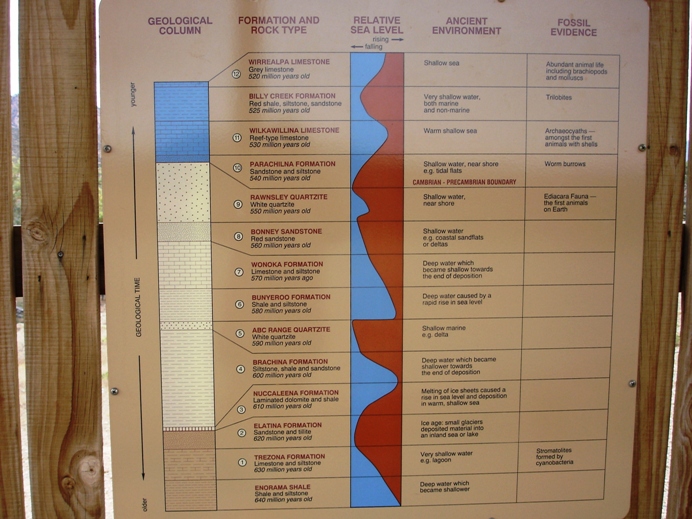
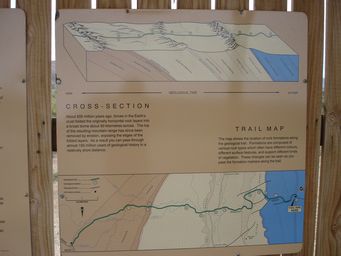
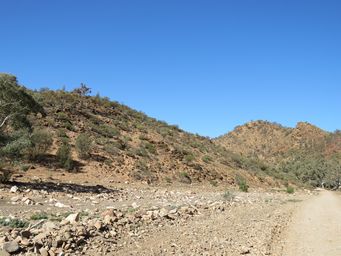
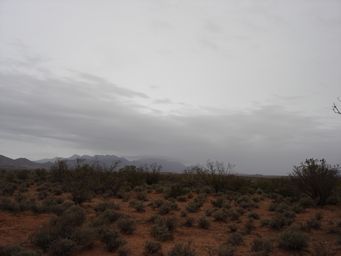

Entering Brachina Gorge August 2019 above left, and in contrast, crossing a flowing Brachina Creek in April 2006 above right.
The
formations are older as you head east and are listed numerically on the information board starting with the oldest in the east. The un-numbered features we not signed so not photographed. Photos following, taken 2006 and 2019, show some but not all of
these geological features. These are displayed in descending age order, from east to west.
Enorama Shale, Shale and siltstone, 640 million years old was not numbered nor photographed.
3. Nuccalena formation, Laminated dolomite and shale, 610 million years old
2.. Elatina formation, Sandstone and tillite, 620 million years old
1. Trezona formation, Limestone and siltstone, 630 million years old
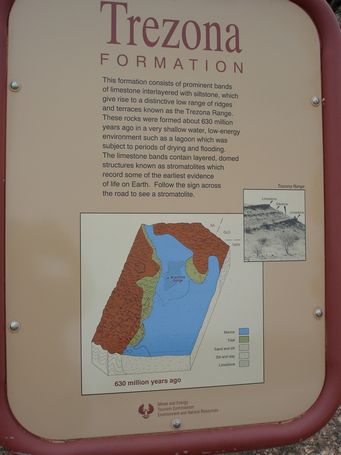

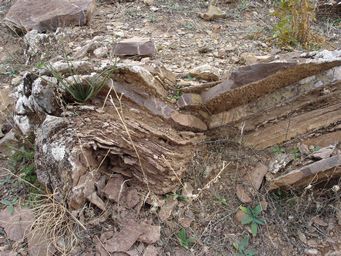
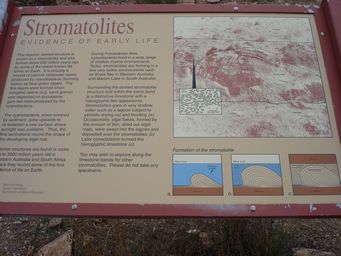



Stromatolites are evidence of one of the earliest formed of life on Earth, cyanobacteria or blue-green algae. Similar fossils
up to 3,500 million years old have been found in Western Australia, where Stromatolites are still forming un the saline waters of
Hamelin Bay, and in South Africa.
These mounds of calcium carbonate layers are formed when cyanobacteria bond together
and produce a sticky gel, trapping sediments and sand together and gradually building up layers. As the sediment accumulates, it forms
flat algal mats or hardens to form stromatolites which have an outer layer of living cyanobacteria. At first glance these don't even
seem to be living. Each structure is actually a very slow growing microbial colony that may grow less than one millimetre per
year.
